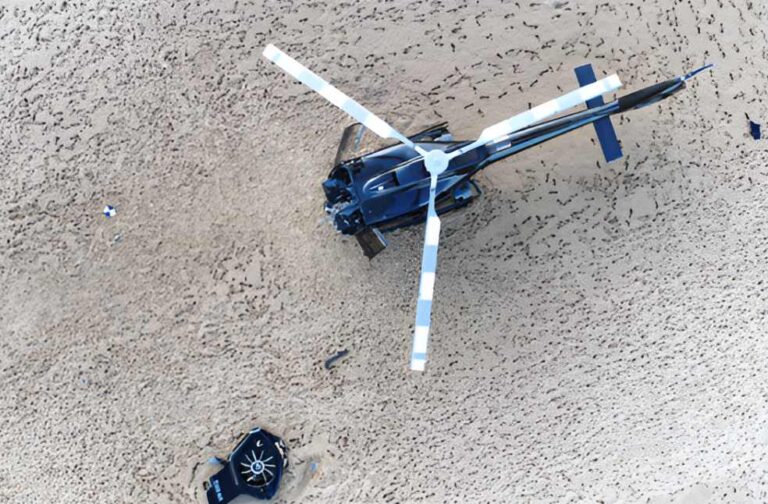Australia: A faulty radio antenna and a series of operational changes have contributed to a fatal mid-air helicopter collision near Sea World on Australia’s Gold Coast, according to a newly released report by the Australian Transport Safety Bureau (ATSB).
The January 2023 accident claimed four lives — including British tourists Diane Hughes, 57, and her husband Ron Hughes, 65 — and left several others seriously injured. The two aircraft collided just 20 seconds after one took off and the other was readying to land after a short scenic flight.
The ATSB report details how one pilot failed to hear a critical radio transmission from the other aircraft due to a malfunctioning antenna, while structural changes implemented by Sea World Helicopters over time diminished safety protocols designed to control helicopter traffic.
The report noted that, “These changes, including the addition of a second helipad and the introduction of larger helicopters, unintentionally created a conflict point between departing and arriving aircraft.”
The helicopter that was departing had been cleared by a ground crew member who believed the airspace was clear. However, this advice was no longer accurate by the time the aircraft lifted off. Meanwhile, the arriving helicopter’s pilot, expecting a standard “taxiing” radio call from the ground, didn’t reassess the risk when none was received — likely because the faulty antenna prevented the broadcast.
The pilot of the landing helicopter was later applauded for safely bringing the damaged aircraft down, potentially preventing further loss of life. Three people on that flight sustained minor injuries, while six others were seriously injured in the crash.
Among the victims was Vanessa Tadros, 36, a mother from Sydney, and 40-year-old pilot Ashley Jenkinson, originally from Birmingham, who was flying the helicopter that had just taken off. In total, the ATSB made 28 findings, highlighting the complexity of aviation safety and the importance of risk management.
ATSB Chief Commissioner Angus Mitchell stated that, “The most fundamental lesson from this investigation is that making changes to aviation operations, even those that appear to increase safety, can have unintended consequences. It is therefore critical that changes are managed through defined processes to ensure overall safety is not adversely affected.”
The accident deeply impacted the local community and raised serious concerns about the oversight of tourist flight operations in high-traffic recreational zones. Authorities say they hope the findings serve as a wake-up call for aviation operators across Australia and beyond.



